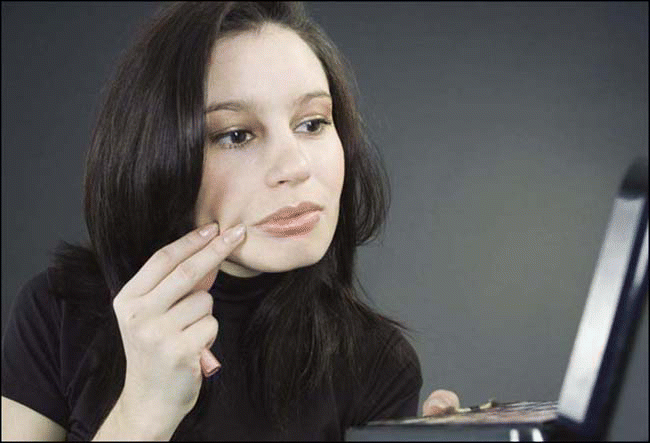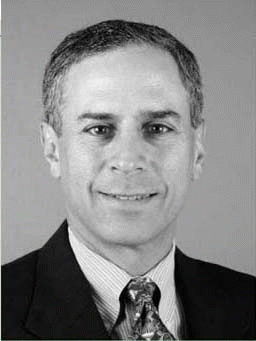Dr. Gentile uses an approach called multimodality aesthetic skin rejuvenation that takes into consideration both the number of different treatment modalities available and recovery time intolerance. In this approach, more than one modality may be used to treat a given problem.
Explore This Issue
August 2006The age-old quest for the fountain of youth has taken many turns. Once relegated to the realm of myth and story-a sort of Holy Grail-it has entered modern life with a vengeance, arming the seekers on this quest with new tools to find youth in age by peeling, lasing, abrading, and filling. Current techniques in skin resurfacing and rejuvenation are making it possible for more people to keep face against the travails of time. Where once chemical rejuvenation for ravages of the sun and age-related skin changes and dermabrasion for deep acne scarring were the main modes of returning an aging or damaged face to a more youthful glow, now a plethora of techniques are available.
Among the challenges posed to plastic surgeons and otolaryngologists is how to choose which modality is the best for an individual patient given the type of skin problem, relative efficacy of different modalities to treat that problem, patient preference, and cost of treatment-both in terms of money and time it takes for healing.
Usually, [treatment choice is] an incremental thing, where you start with something very minimal and then build up over time and you stop when the patient is happy. – Ira Papel, MD
Wide Range of Nonsurgical Techniques Available
A number of nonsurgical techniques to repair damaged, scarred or aging skin on the face and neck are currently available, including chemical peels, laser resurfacing, botulinum toxin type A (Botox), dermabrasion, filler agents, thermage (or radiofrequency), and plasma energy. According to Fred G. Fedok, MD, Chief of Otolaryngology-Head and Neck Surgery at the Milton S. Hershey Medical Center of Penn State University College of Medicine, these techniques have a varied history and have some varied application. He continued, all, however, obtain their favorable results via the body’s ability to respond to injury with collagen deposition, cellular growth, and remodeling.
To help choose which technique may be best for a given condition, different ways of classifying the techniques have been proposed. One way is to classify treatment based on the objective desired (see chart, below). Another is by the type of intervention used to treat a specific defect (see chart, bottom right).
Given that several modalities can be used to treat a specific condition or achieve a desired objective, another classification system has been proposed that emphasizes the option to use more than one modality for a given condition. In an article published in Facial Plastic Surgery in 2005 (21:120-130), Richard D. Gentile, MD, MBA, of Northeastern Ohio University College of Medicine in Rootstown, and colleagues proposed a classification system based on two criteria: degree of wound healing or ablation and the effectiveness for specific clinical conditions. They claim that when comparing the degree of ablation and clinical conditions, the treatment options tend to show a similar pattern of choices.
Because several options may be available to treat a given condition or achieve a desired objective, Dr. Gentile and colleagues use an approach called multimodality aesthetic skin rejuvenation (MMASR) that takes into consideration both the number of different treatment modalities available and recovery time intolerance. In this approach, more than one modality may be used to treat a given problem. For example, they have found that stacking nonablative techniques together during the same treatment session enhances the effects of microdermabrasion without increased side effects, and allows the patient to reduce number of office visits required to achieve their objective.
Customize Treatment to Fit the Patient
Regardless of classification system, or whether a single or multimodality approach to skin resurfacing is used, treatment choice ultimately is about tailoring treatment to individual needs. There is no preferred treatment, said Dean M. Toriumi, MD, Professor of Otolaryngology-Head and Neck Surgery at the University of Illinois in Chicago. Selection of method depends on the patient, their skin type, and the experience of the surgeon. According to Dr. Toriumi, dermabrasion remains an effective treatment for unpigmented raised facial scars, chemical peels for fine wrinkles and some pigmentation problems, carbon dioxide lasers for fine facial wrinkles in fair-skinned patients, and pulsed dye lasers for scars and for superficial vascular lesions.
For patient with specific skin types, however, certain techniques are not recommended. Carbon dioxide laser resurfacing is not recommended in patients with darker skin, he said, adding that they can develop permanent pigmentation problems and dermabrasion is not good for younger children, as their skin may respond in a hypertrophic fashion.

For Ira Papel, MD, President of the American Academy of Facial Plastic and Reconstructive Surgery, and Assistant Professor of Otolaryngology-Head and Neck Surgery at Johns Hopkins University in Baltimore, MD, patient skin type, age, and what a patient want to accomplish are key variables to consider when deciding on which treatment modality to choose. According to Dr. Papel, selection of treatment modality follows an incremental approach to what the patient wants. Usually, [treatment choice is] an incremental thing, he said, where you start with something very minimal and then build up over time and you stop when the patient is happy.
The general problem with some of these technologies is that they tend to become obsolete in a relatively short period of time. – Dean M. Toriumi, MD
So, for example, the patient will start with a good skin care program that includes a good moisturizer with sun protection, toners, and perhaps incorporating tretinoin to get the skin to rejuvenate from underneath, and then will combine this with light chemical peels. Once they’re on that program and doing well, said Dr. Papel, they may need to do something a little more aggressive and then you might be using intermediate peels. According to Dr. Papel, lasers are more aggressive and used later on. They’ve kind of lost favor over the past several years because of the good results with using peels and skin care, he said, adding that skin care and peels can even be better than lasers.
Consider Recovery Time
A shared characteristic of both chemical peels and lasers, according to Dr. Fedok, is that they both have a long track record. However, both may require some recovery time depending on how deeply they penetrate the skin. The deeper one affects the skin, the more pronounced the result, he said, but the trade-off is that the more dramatic the positive effect, the longer the down time will be.
According to Dr. Fedok, it is hoped that the newer nonablative resurfacing technologies, such as plasma energy or thermage (or radiofrequency), will have quicker healing times. The jury is not completely out on that hope, he said, referring to plasma technology. More time as well, is needed to evaluate the efficacy of thermage. The results at this time are relatively new and, as expressed, are still being evaluated, he said.
The deeper one affects the skin, the more pronounced the result, but the trade-off is that the more dramatic the positive effect, the longer the down time will be. – Fred G. Fedok, MD
Experts Critical of New Technology
Dr. Papel is more direct in his view and experience of these newer technologies. Thermage is a radiofrequency that stimulates collagen production in the dermis part of the skin, he said. The problem with it is that it doesn’t work. Part of the problem with this technology, he added, is that there is no long-term or scientific data on efficacy.
This is similar to plasma energy technology. Plasma energy is supposed to do the same thing as thermage, to stimulate the collagen growth to make the skin thicker with less wrinkles, he said. However, he added, neither he nor the company selling it has any long-term data on its efficacy.
I’d be aware of overblown expectations, he said, adding that these technologies are manufacturer driven and so far have not been shown to be better than anything else.

Another newer technology that is hoped to be less invasive, cause less damage to the superficial skin, and permit a more rapid recovery period is the newest type of laser, the fraxel laser. However, more experience is needed with this new technology before its effectiveness can be determined, said Dr. Toriumi who will not commit to this technology until more is known. The general problem with some of these technologies, he added, is that they tend to become obsolete in a relatively short period of time.
Dr. Papel agrees. Although he personally has no experience with thermage, he said that there are many practices in town that bought this machine and I don’t think that anyone is using them anymore.
Incorporating Skin Resurfacing Procedures into Otolaryngologists’ Practice
Dr. Fedok and Dr. Toriumi, who are practicing otolaryngologists, already have incorporated some of the previously described techniques into their practice. My practice, although a University-based practice, is highly involved with facial plastic and reconstructive procedures, said Dr. Fedok, so for the application of most of these technologies is a daily event. He added, however, that he has very limited experience with plasma energy and no experience with thermage.
Dr. Toriumi who is using dermabrasion for scars and carbon dioxide lasers for treating fine wrinkles in fair-skinned people is not going to use some of the newer technology, like the fraxel laser, before more data is available on its effectiveness.
Dr. Gentile uses an approach called multimodality aesthetic skin rejuvenation that takes into consideration both the number of different treatment modalities available and recovery time intolerance. In this approach, more than one modality may be used to treat a given problem.
Although some otolaryngologists are clearly incorporating these techniques into their practice in different degrees, not all otolaryngologists are doing so. Among the issues that otolaryngologists’ need to address when incorporating skin resurfacing procedures in their practice is the technology that is available to them. What equipment do they have? What equipment do they want to invest in? Can the current equipment they have be adapted for any of the skin resurfacing procedures?
According to Dr. Toriumi, there are very few if any existing technologies that exist in the otolaryngologist’s office that can be converted to treat cosmetic issues with their patients. Conversely, Dr. Fedok said that all of these tools or technologies most probably have both non-cosmetic and cosmetic applications.
Another issue may be the learning curve involved in using these techniques. For Dr. Papel, however, this really isn’t much of an issue. All the things I’ve mentioned, other than carbon dioxide laser, are pretty easy, he said. All you have to do is watch somebody and develop some judgement about what will work and what won’t work. He added, the good thing is there aren’t a lot of complications with this kind of stuff. Most things are fairly benign.
©2006 The Triological Society




Leave a Reply